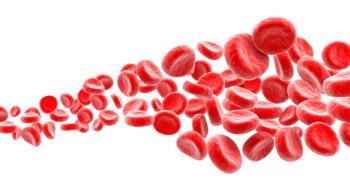
A Historic Perspective on Frontline WM Management
Transcript:
Steven P. Treon, MD, PhD: Historically we’ve leveraged Rituxan, either by itself or more commonly with other drugs, in the first-line treatment of Waldenström macroglobulinemia. The traditional drugs that we’ve used have included alkylating drugs, either cyclophosphamide or more recently bendamustine. Proteasome inhibitors like bortezomib, which is also known as Velcade, or carfilzomib, also have been used.
We have shied away from using nucleoside analogs like fludarabine or cladribine because of the effects on the bone marrow and the immune system, as well as the potential for increased risk of secondary malignancies that have also been recognized with that class of drugs. That used to be the mainstay of therapy in the past but not so more recently. Those predominantly form the core of drugs that we’ve traditionally used to treat people with Waldenström macroglobulinemia.
Plasmapheresis is a modality that we use particularly for patients who have very high IgM levels and have symptomatic hyperviscosity. That’s an oncological emergency. If a patient is coming in, they have high IgM, they’re having nosebleeds or headaches or blurry vision, and there could be other symptoms as well. The first, second and third right answer is plasmapheresis, plasmapheresis, plasmapheresis. You need to get that out of the way.
In patients who have very high IgM levels but who don’t have symptomatic hyperviscosity, if they’re going to get rituximab, we often recommend that plasmapheresis occur because rituximab can actually make the IgM go up even further and can prompt hyperviscosity. So we either use plasmapheresis or we give the chemotherapy without the rituximab until we can get the IgM down.
But there are also circumstances in which the patient presents with severe cryoglobulin. That’s when the IgM falls out of solution because of cold exposure. We might use plasmapheresis, but then we put warmers on the machine to make sure that we’re not cooling the blood down. Severe cold agglutinins. That’s when the IgM can bind to red blood cells under cold conditions. Same thing. We sometimes might use it. Again, we put warmers on.
For severe peripheral neuropathy, when it’s progressing very, very fast, we will often use plasmapheresis in such cases until we can get the therapy to start working. So those are the examples that we’d use plasmapheresis. One size doesn’t fit all, but I think it’s important to recognize that this could be a very helpful modality to get the IgM down, at least for a couple of weeks’ time while therapy sets in and works. And some patients do require ongoing plasmapheresis, so it’s important to think about who that patient might be and how to integrate definitive therapy.
Transcript Edited for Clarity




